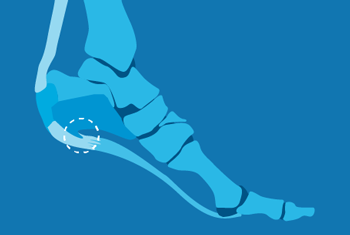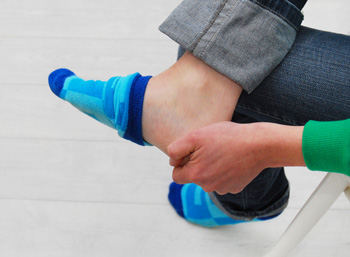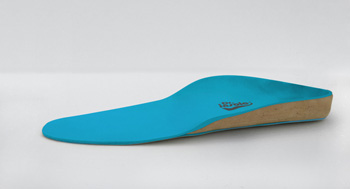 |
Quality without compromise
Best value in the UK
|
 |
Free consultations with no obligation Including gait analysis
|
 |
A reputation for excellence |
 |
30-day money back guarantee
Comfort guaranteed
|
Heel spurs

Heel spur, or calcaneal spur, is a result of calcium deposits that build up gradually on the heel bone. The occurrence of heel spurs is often associated with inflammatory processes in the plantar fasciia – the thick band of connective tissue located under the sole of the foot that connects the heel bone and the toes. Injuries, repetitive stress and strains to the plantar fasciia may cause small tears, damage and thickening of the tissue. Heel spurs can also be caused by excessive, prolonged strain on other foot ligaments and muscles, as well as from recurring tears to the membrane covering the heel bone. Over time, accumulating calcium deposits form into bony protrusions.
Factors contributing to the development of heel spurs
Excessive, repetitive stress and stretching of foot muscles and ligaments can lead to the formation of heel spurs. The following factors increase the risk of developing calcaneal spurs:
• Biomechanical gait abnormalities, such as overpronation (often associated with flat feet) and oversupination
• Excessive weight
• Badly fitting shoes
• Strenuous physical exercise
• Activities which require prolonged periods of standing or walking (especially on hard surfaces)
• Significant flatfoot deformity or very high foot arches
Symptoms of heel spurs

Heel spurs may be asymptomatic and they may not cause any heel pain or tenderness. However, as heel spurs are frequently associated with plantar fasciitis, pain and tenderness in the heel area may be a sign of the inflammation of plantar fasciia and the presence of heel spurs
Heel pain that is associated with plantar fasciitis and heel spurs is often stronger after longer periods of rest, e.g. after getting out of bed. It may also be exacerbated by high-impact physical activity and exercise.
Heel spurs can be easily identified from an X-ray image.
Treatment of heel spurs

Wearing appropriate footwear and reducing strenuous exercise is often necessary in order to reduce the heel pain and discomfort associated with heel spurs.
Stretching exercises and physical therapy often help relieve the painful symptoms of heel spurs.
Anti-inflammatory medicines are used to alleviate heel pain. Sometimes, cortisone injections are recommended to decrease the inflammation in the heel area.
Custom-made orthotics are used to correct any biomechanical issues which contribute to heel pain. Made-to-order shoe insoles align feet to achieve optimal position and reduce excessive strain and pressure on foot joints and ligaments. Moreover, wearing orthotic insoles for heel spurs allows for additional cushioning and protection of the affected areas.
To book a free consultation with one of our orthotic specialists and to find out more how our orthotics can help with your heel pain, please click here
